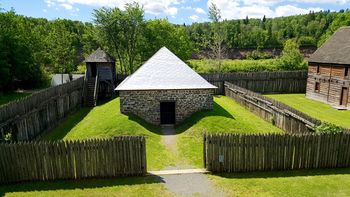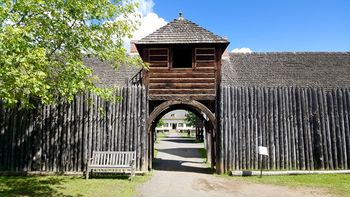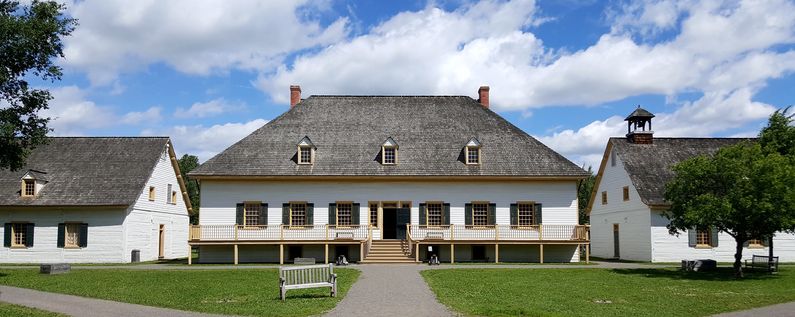Fort William (10)
|
Fort William (10) (1803-1883) - A fur trading post established in 1803 by the North West Company (NWC) as Fort Kaministiquia near present-day Thunder Bay, Ontario. Renamed Fort William in 1807 after William McGillivray, chief director of the NWC (1804-1821). Captured by employees of the rival Hudson's Bay Company (HBC) under Lord Selkirk in 1816, it was briefly occupied until 1817. The fort passed to the control of the HBC when it absorbed the NWC in 1821. The post was officially closed in 1883 and the site was obliterated in the 1890's by the construction of the Canadian Pacific Railway yards at present-day Thunder Bay.
History of Fort William 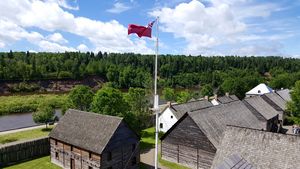 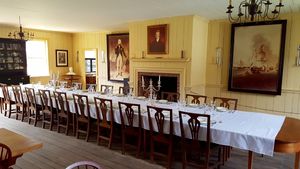 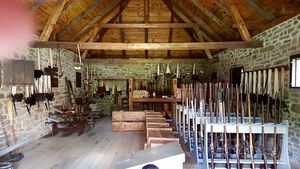 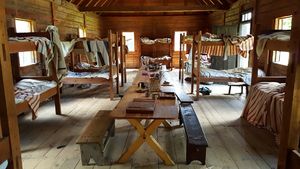 Established in 1803 by the North West Company (NWC) as Fort Kaministiquia. The fort was renamed Fort William in 1807 after William McGillivray, chief director of the NWC. The fort operated as the district headquarters of the NWC and traded with trappers and the native population for furs. The trade goods came from Montreal in large canoes paddled by Canadian Voyagers. The traded furs were packaged and compressed into 90-pound bundles and returned to Montreal by the Voyagers. Ross Cox, an early-19c HBC clerk and trader, describes it:
This early era of the fur trade was very profitable and the post flourished. The rival Hudson's Bay Company established the Point Meuron HBC Post nearby. In August 1816, after clashes between the two posts, HBC employees under Lord Selkirk captured and occupied Fort William until 1817. The fort was returned to NWC control in 1817 but returned to HBC control when the NWC merged into the HBC in 1821. The post continued to operate using Voyagers to transport the trade goods and furs to Montreal until the change of fashion and the depletion of the fur animals reduced the trade. The arrival of the railroads in the 1870s brought an end to the Voyager system. Fort William was officially closed in 1883 and the site was obliterated in the 1890's by the construction of the Canadian Pacific Railway yards at present-day Thunder Bay. The powder magazine was the last of the buildings to be destroyed in 1902.
Current StatusAn absolutely Must See! Now part of Fort William Historical Park. This is a complete restoration of the fort as it was during the North West Company era but located on a different site.  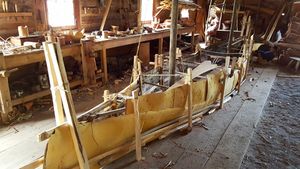 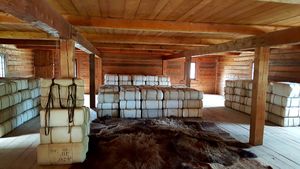 The fort replicates the time of the annual gathering of Scots traders, French Canadian Voyageurs and native fur trappers. Fort William was the largest post of its kind in North America and the annual summer rendezvous attracted over 1,000 traders, trappers and voyageurs. Magnificent reconstructions of nearly all the buildings that would have been found on this post. Most of the buildings are open to visitors and contain the things that would have been in place in that era. Costumed interpreters explain the times and the contents in character. The interpretation of the Canadian Voyageurs includes the construction of the canoes, trapping the furs, preparing the furs and packaging the furs into compressed 90-pound bundles. The interpretation does not stop there and includes the final step of organizing the bundles into canoe loads; the warehouse has several canoe loads ready for shipment and that really illustrates what a large operation this was. A large visitor center provides access to the site by either a walking path or by a small shuttle bus, admission fee.
Plaques, Markers and MonumentsSeveral markers and a monument are located around Thunder Bay.
See Also: Sources: Links:
Visited: 13 Jul 2016
| ||||||
